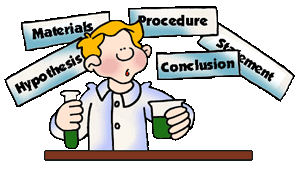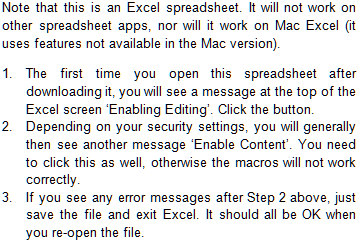Getting Started on an Investigation or Project
-
Ideas
The starting point of your project is to choose a topic. This is also the hardest part and may take a couple weeks of thought.
Start thinking about ideas now and keep a list of possibilities. (Also start a log book at this point).Your project can be an investigation, a model or an invention. Starting points for ideas are –
- Use a wizard, such as Science Buddies Topic Selection Wizard This asks you a series of questions to find out what things you are interested in, then lists topics matching those criteria. You can also filter the results by age and level of difficulty.
Hint: As well as listing suitable topics from the questionnaire, also try using the search box at the top right of screen. For example searching for ‘Distraction’ will list all the matching project ideas, ‘Ask an expert’ questions and news articles. Then just choose the appropriate tab to filter them.
- Look at project topics on –
Science Fair Project Ideas
Julian’s Science Fair
Science Fair Projects This has them by category (chemistry, physics, biology etc.)
How well will it work
Once you have come up with a ‘short list’ of 3 or 4 ideas –
- Consider how well each would work as a research project (e.g. complexity, scope, time required, equipment needed etc)
- What is the hypothesis, and what variables would you control to measure the effect?
Some guidelines –
- For a Year 8 project, it should be short enough to finish in one term. Also keep it simple – your first project does not have to be earth shattering.
- For a Year 9 or Year 10 project, it just needs to be finished by August. Is your topic original, or are you just repeating what someone else has already done?
Finally, rank your ideas in order
- Think about topics like Mythbusters – ‘Is it fact or is it fiction?’
- Use checklists of topics that have previously been used
- Look at previous Young Scientist Projects
- Think about –
- Brainstorm with family and friends
Science subjects – physics, chemistry, biology, earth sciences
Technologies – around the house, sports, the things you encounter or use every day, computers, communications etc
Yourself and your interests – health, hobbies, fitness, sport
Around your home – kitchen, laundry, garden, pets and the house itself
Your friends and relatives (including their jobs, professions and interests). If you identify something, have a talk to them about possible projects as well.
Your school and your neighbourhood or community (conservation, geography, local industry & businesses, communication); things in the news
TV shows and magazines
Ask the sceptic’s question ‘Is it actually true that … does …’ (for example, with product advertising claims and things you suspect are just urban myths)
Have you previously identified particular things that could work better, things you want invented, or areas you would like to find out more about?The list is endless, which can be a problem in itself – too many choices. Also many students aren’t really sure about what areas they are most interested in. A good starting point is to complete the Student Interest Matrix, which you can download below. - Use a wizard, such as Science Buddies Topic Selection Wizard This asks you a series of questions to find out what things you are interested in, then lists topics matching those criteria. You can also filter the results by age and level of difficulty.
-
What is scientific method?
This is simply an evidence-based approach for investigating something. It is used at all levels – from school projects through to high level research (and by Mythbusters) – and not just in science but in many other areas.

The details
- What exactly do you intend to prove or disprove (this is the hypothesis)
- Do some background research
- What will you vary to see the effect (these are the inputs, called the independent variables)
- What will you measure (this is the output, called the dependent variable)
- Identify other variables that you will need to keep constant or take into account
- Put the plan together (this is called ‘Materials and methods’)
- Do the investigation.
- Write up the results (this is called ‘Results and discussion’). Make sure that you understand what the results mean and discuss why (or why not) particular results have occurred. Also include some of the underlying science.
- Keep a detailed log book – notes of everything you do, starting at the first idea you had
- Also –
Include replications (always do it more than once, to improve the accuracy) and, for some investigations, experimental controls (the ‘Do nothing’ case).
Include a Risk Assessment – what can go wrong, what could be dangerous.
-
The Project Plan
The first step in any investigation is to develop a plan (and start your log book) – what you will be doing and how you will go about it. This includes –
- The hypothesis (the goal, or what you are setting out to prove or disprove)
- The independent variables (what you are varying) and dependent variables (what you are measuring), as well as all the other variables that you need to eliminate or control in the design.
- The detailed steps in the investigation or experiment, along with what materials and resources you will need (which may be outside assistance or experimental volunteers).
- A timeline, with dates (since the most difficult thing in any project is to finish it on time).
Of course, since it’s a scientific investigation, you also need to research and include the science behind it.
The plan also forms the basis for the first two sections in the final report (the Introduction and Materials & Methods) – so spending some time on this up front will pay off, as it means less work to do when you finish the project and start writing the report.
Download a template for the project plan and report format here.The Report
Once you have done the investigation or experiment, it’s time to write it up and discuss the results. Since you have previously completed the Introduction and Materials & Methods sections, what is left is –
- Results
- Discussion
- Conclusions
Again, have a look at the project plan and report format for more details.
Rubrics
It’s very useful to have a look at the Young Scientist rubrics for investigations –


